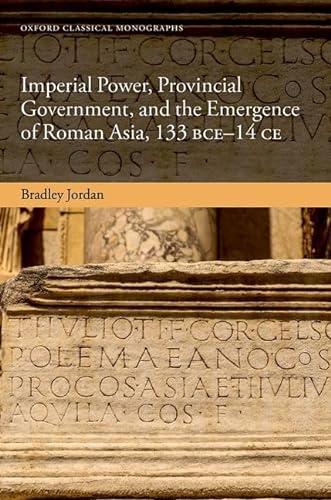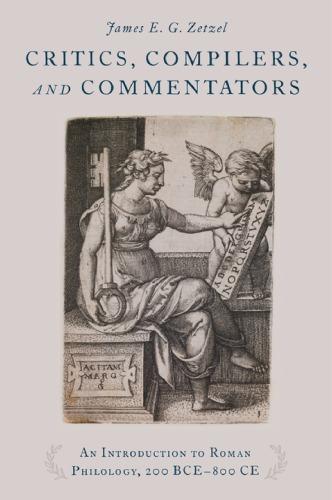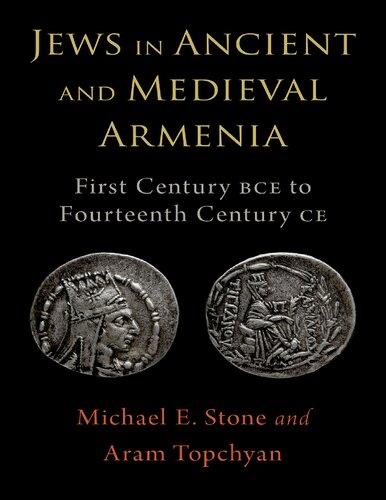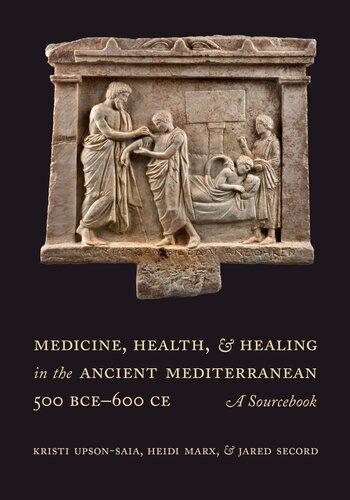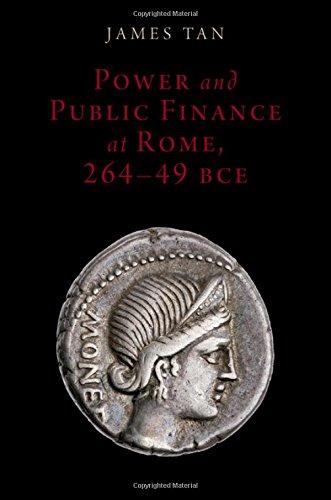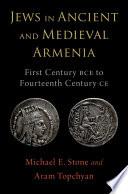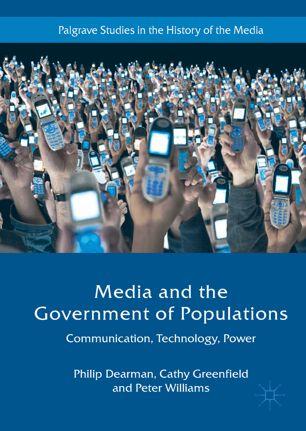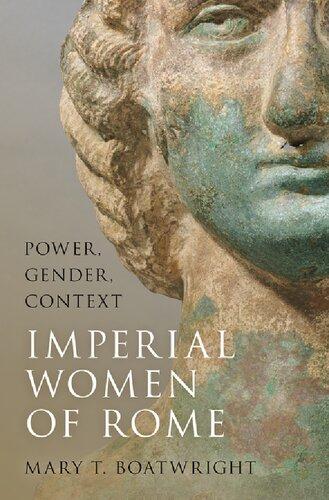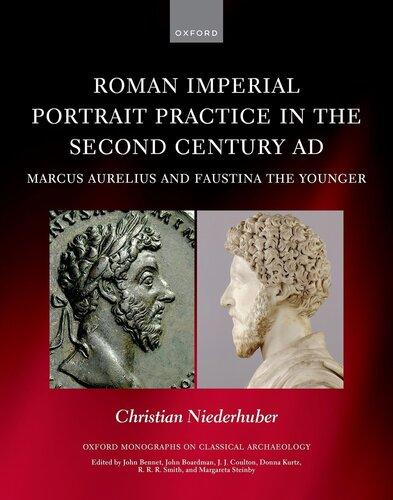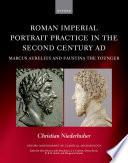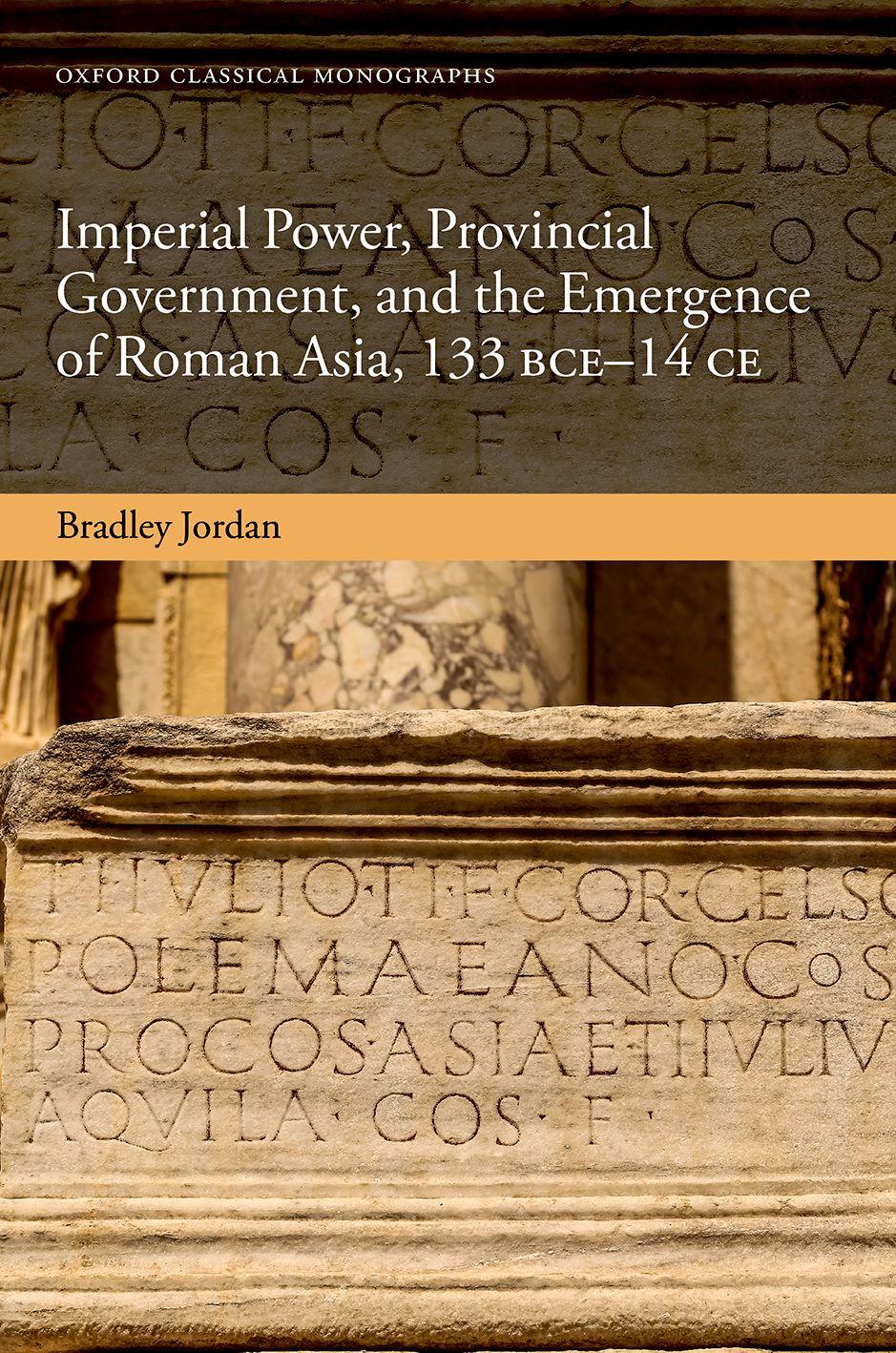Abbreviations
Ancientauthorsandtextsarereferencedinthestyleof OxfordClassicalDictionary,5th edition.Periodicalsfollowtheconventionsof L’AnnéePhilologique withoccasionalselfevidentmodifications.Alldatesare unlessotherwisestated.Otherabbreviationsareas follows:
AÉ 1888–, L’annéeépigraphique,Paris.
ANRW Haase,W.&Temporini,H.(eds),1972–, AufstiegundNiedergangder römischenWelt:GeschichteundKulturRomsimSpiegelderneueren Forschung,Berlin.
AvP 1885– AltertümervonPergamon,Berlin.
BÉ ‘Bulletinépigraphique’,appearingannuallyin Revuedesétudesgrecques
BMCBritishMuseumCatalogue.
Carie Robert,L.,1954, LaCarie:histoireetgéographiehistoriqueaveclerecueil desinscriptionsantiques,Paris.
CIL Henzen,W.,Hülsen,C.,&Mommsen,T.(eds), CorpusInscriptionum Latinarum,Rome.
FGrH Jacoby,F.(ed.),1923–, DieFragmentederGriechischenHistoriker,Berlin.
IAph2007 Reynolds,J.,Rouché,C.,&Bodard,G.(eds),2007, Inscriptionsof Aphrodisias,available<https://insaph.kcl.ac.uk/insaph/iaph2007/>.
I.Cos Segre,M.(ed.),1993, IscrizionidiCos,2vols,Rome.
I.Délos Dürrbach,F.(ed.), InscriptionsdeDélos,Paris.
I.Didyma Rehm,A.,1958,inWiegnand,T.(ed.), Didyma,vol.2,Berlin.
I.Eph. 1979–1984, DieInschriftenvonEphesos,8vols,Bonn.
IG 1873– InscriptionesGraecae,Berlin.
IGR Cagnat,R.(ed.),1906–27, Inscriptionesgraecaeadresromanas pertinentes,Paris.
I.Ilion Frisch,P.(ed.),1975, InschriftenvonIlion,Bonn.
ILS Dessau,H.(ed.),1892–1916, InscriptionesLatinaeSelectae,Berlin.
I.Kaunos Marek,C.(ed.),2006, DieInschriftenvonKaunos,Munich.
I.Keramos Varinioğlu,E.(ed.),1986, DieInschriftenvonKeramos,Bonn.
I.Kyme Engelmann,H.(ed.),1976, DieInscriftenvonKyme,Bonn.
I.Labraunda Crampa,J.,1969–72, Labraunda:SwedishExcavationsand Researches,vol.3,Lund.
I.Magnesia Kern,O.(ed.),1900, DieInschriftenvonMagnesiaamMaeander, Berlin.
I.MagnesiaSipylos Ihnken,T.(ed.),1978, DieInschriftenvonMagnesiaamSipylos,Bonn.
I.Metropolis Dreyer,B.(ed.),2003–, DieInschriftenvonMetropolis,Bonn.
I.Mylasa Blümel,W.(ed.),1987–8, DieInschriftenvonMylasa,2vols,Bonn.
Inscr.It. 1937–1963, InscriptionesItaliae,Rome.
I.Priene²Blümel,W.&Merkelbach,R.(eds),2014, InschriftenvonPriene,2nd edn,2vols,Bonn.
I.Sagalassos Eich,A.,Eich,P.,&Eck,W.(eds),2018–, DieInschriftenvonSagalassos, Bonn.
I.Sestos Krauss,J.(ed.),1980, DieInschriftenvonSestosundderthrakischen Chersones,Bonn.
I.Smyrna Petzl,G.(ed.),1982–90, DieInschriftenvonSmyrna,2vols,Bonn.
I.Stratonikeia Şahin,M.Ç.(ed.),1981–2010, DieInschriftenvonStratonikeia,3vols, Bonn.
I.SultanDağı Jonnes,L.(ed.),2002–, TheInscriptionsofSultanDağı,Bonn.
I.Tralleis 1989–2019, DieInschriftenvonTralleisundNysa,2vols,Bonn.
MAMA Calder,W.M.(ed.),1928–62, MonumentaAsiaeMinorisantiqua, Manchester.
Milet 1997–, InschriftenvonMilet,Berlin.
MRR Broughton,T.R.S.,1951–60, TheMagistratesoftheRomanRepublic, 3vols,NewYork.
OGIS Dittenberger,W.(ed.),1903–5, Orientisgraeciinscriptionesselectae: supplementumsyllogesinscriptionumgraecarum,Leipzig.
Opramoas Kokkinia,C.,2000, DieOpramoas-InschriftvonRhodiapolis: EuergetismusundsozialeEliteinLykien,Bonn.
RDGE Sherk,R.K.,1969, RomanDocumentsfromtheGreekEast:Senatus ConsultaandEpistulaetotheAgeofAugustus,Baltimore.
RIC 1923–, TheRomanImperialCoinage,London.
RPC Burnett,A.M.,Amandry,M.,&RipollèsAlegre,P.P.(eds),1992–, RomanProvincialCoinage,London.
RRC Crawford,M.H.,1974, RomanRepublicanCoinage,2vols,London.
RS Crawford,M.H.etal.(eds),1996, RomanStatutes,2vols,London.
Sardis Robinson,D.M.&Buckler,W.H.(eds), SardisVII:GreekandLatin Inscriptions,Leiden.
SEG 1923–, SupplementumEpigraphicumGraecum,Amsterdam.
Syll.³Dittenberger,W.(ed.),1915–24, Syllogeinscriptioumgraecarum, 3rdedn,4vols,Leipzig.
TAM 1901–, TituliAsiaeMinoris,Vienna.
ZPE 1967–, ZeitschriftfürPapyrologieundEpigraphik,Bonn.
Introduction
In9/8 ,PaullusFabiusMaximus,theproconsulofAsia,issuedanedict proposingthathenceforththecitiesoftheRomanprovinceofAsiabegintheir civiccalendarsonthebirthdayofAugustus.Thisisoneofthemostwidelyattested decreeseverissuedbyaRomanmagistrate:fragmentaryinscribedcopiesappearat Priene,Metropolis,Maeonia,Apamea,Eumenea,andDorylaeum.¹However, alongsidePaullus ’ edictwe findadecreesolicitedbyhimfromabodydescribed asthe κοινόν ofAsia.²TheGreeksinAsia(οἱἐ
)wholeheartedlyendorsedtheproconsul’ssuggestionandgrantedhimsignificanthonours. While,forthemostpart,the koinon’sdecreecorrespondswithPaullus ’ instructions,somesubtledifferencesemerge,mostnotablyregardingthepublicationand memorializationoftheact.Wheretheproconsulrequiredonlythatthetextofhis edictandthesubsequentdecreeofthe koinon beinscribedatthetempleforRoma andAugustusinPergamum,the koinon decreed,inaddition,thattheseshouldbe inscribedinthetemplesofCaesarinthecitiesheadingjudicialdistricts,the Roman conventus.Notably,noneofthesiteswhichpreservecopies,exceptfor Apamea,wasa conventus centre.Thecommunitiesthemselves,unbidden,chose tocommemoratethisweightyoccasionthroughtheinscriptionofthesenormative documents.³Thisexampleillustratesthecomplexinterplaybetweenimperial, provincial,andlocalinstitutionsandactorsintheGreek-speakingEast.Inturn, itraisesimportantquestionsabouttheaimsofRomanprovincialgovernment.
WhatambitionslaybehindRomanprovincialgovernance?Howdidthese changeovertimeandinresponsetolocalconditions?Towhatextentdidlocal agentsfacilitateandcontributetothecreationofimperialadministrativeinstitutions?TheanswerstothesequestionsshapeourunderstandingofhowtheRoman empireestablishedandmaintainedhegemonywithinitsprovinces.Thisissueis particularlyacutefortheperiodduringwhichthepoliticalapparatusofthe RomanRepublicwasitselfincrisisand fl ux preciselytheperiodinwhich manyprovinces fi rstcameunderRomancontrol.Thisworktakesupthe challengebyfocusingcloselyontheformationandevolutionoftheadministrativeinstitutionsoftheRomanempirethroughacasestudyoftheprovinceof Asia.Comparativelywellexcavated,Asia ’srichepigraphylendsitselftodetailed
¹ RDGE 65; I.Priene²14; SEG 56.1233withLaffi 1967;Dreyer&Engelmann2006;Thonemann2015, 123.Onthedate:Stern2012,274–6contraBuxton&Hannah2005,290–306.
² RDGE 65a.26–30.³ RDGE 65d.62–67.
study,whiletheregion’slonghistoryofautonomouscivicdiplomacyand engagementwitharangeofRomanactorsprovideimportantevidencefor assessingthewaysinwhichRomanempireandhegemonyaffectedconditions onthegroundintheprovince.Mostsignificantly,itsuniquehistory,movingfrom alliedkingdomtoregularlyassigned provincia and,aftertheFirstMithridaticWar (c.89–85),toareconqueredandreorganizedterritory,offersaninsightintothe complexmechanicsofinstitutionalformationduringthiscrucialtransition.
ScholarlyliteraturefocusingonRoman provinciaAsia touchesonawiderange oftopicsandiscorrespondinglyvast.BeginningwithFoucartandChapotinthe earlytwentiethcentury,accountsofitsformationhavegenerallyfocusedon politicalhistory,asguidedbytheRepublicanhistoriographicalsources. Scholarshiponthegovernanceof provinciaAsia duringtheRepublicanperiod hastendedto fitwithinthiswell-worntradition.⁴ However,aslewofrecent, substantialstudieshaveemergedtreatingtheinteractionbetweenlocalelitesat EphesusandPergamumandtheRomanstate,alongsidevolumestacklingissues asdiverseascitizenship,propertyownership,andcivichonours.⁵ Scholarshipon theso-called koinon ofAsiahasmovedforwardsubstantiallyinthelastdecade anditslinkstotheimperialcultunderAugustusandhissuccessorshavebeenthe subjectofextensiveinvestigation.⁶ Simplyput,inlightoftheserecentpublications, itisdesirabletoreassessthemechanismsthroughwhichRomeestablishedits poweroverthecommunitiesoftheregion.RevisitingtheuniquestatusofAsiain thelatesecondcenturyasaninherited,ratherthanconquered,additiontothe empirecanonlybebeneficial.⁷ Inlightofthis flurryofinterest,Asiaoffersan excellenttargetfordetailedanalysisofRomanadministrativeobjectives,outcomes,andlocalresponses.
Typically,scholarshiponprovincialgovernanceduringthelateRepublichas beengroundedinapproachestotheexpansionofRomanpowerinthe Mediterranean.Inhisseminal ForeignClientelae(264–70 ),Badianbelieved thatwhencommunitiessubmittedtoRomethroughtheprocessof deditio orwere named amicietsocii thatis,theywereintegratedintoaRomanprovince they became clientes oftheRomanpeopleandofthemagistratesresponsible. Interpretingthisinlightofformalpersonal clientela aspracticedatRome,he arguedthatprovincialadministrationaroseoutoftheseclient–patronrelationships.⁸ WhilemorerecentscholarshiphasdemonstratedthatBadian’smodel overemphasizestheimportanceandnatureof clientela intheprovinces,his
⁴ Foucart1903;Chapot1904.E.g.,Magie1950;Mitchell1993;Daubner2006²,191–261;Marek 2010.
⁵ Elites:Kirbihler2016;Ventroux2017.Citizenship:Heller&Pont2012.Property:Lerouxel&Pont 2016.CivicHonours:seethevolumebyHeller&vanNijf2017.
⁶ Vitale2012;Frija2012;Edelmann-Singer2015;Kolb&Vitale2016.
⁷ I.Metropolis 1 withcommentsofDreyer&Engelmann2003;Jones2004.
⁸ Badian1958,1–13.Cf.vonPremerstein1937,13–15.
identificationoftheimportanceofinformalnetworksasopposedtomilitary conquestwasfarsighted.⁹
Harrisprovidedanalternative,influentialschemawhichfocusedonthe internaldriversofRomanconquest.Respondingtothe ‘defensiveimperialism’ thesiswhich,reflectingtherhetoricoflateRepublicanauthors,sawtheexpansion ofRomanhegemonyaspromptedbythethreatsandbadfaithoftheirimperial rivals,Harrisarguedthatanaristocraticethosofcompetitionformilitaryglory, anexpansionistideology,and,crucially,desireforeconomicspoilsledtothe systemicpursuitofanaggressiveagenda.Asacorollarytothis,theSenateand populus soughttoassumeandmaintaincontroloverneighbouringterritoriesand resources,shiftingfromalargelyindirecttoamoredirectmodelovertime.¹⁰
PushingbackagainstHarris’ pictureofconsistentRomanaggression,Gruen concentratedontheexternalpressuresonRomanforeignpolicy.Hismajor contributionwastoemphasizetheextenttowhichRomanactionrespondedto andengagedwithexistingHellenisticnormsandprocesses,whileacknowledging thatthiswasnotalwaysingoodfaith.HeassertedthatRomedidnotseekto conquerterritoryforitsownsake,suggestingthattheRepublichadnoconsistent policytowardsdefeatedpolitiesbutrespondedonacase-by-casebasis.¹¹Healso comprehensivelyrejectedthe clientela modelasapplyingtoRomanrelationships withactorsintheeasternMediterranean,arguingconvincinglythatRomanaction intheGreekEastisbestunderstoodwithinapre-existingHellenisticframework.¹² Buildingonthiswork,aconsensushasarisenthatthelanguagesoffriendshipand kinship,ratherthan clientela,wereemployedonaconsistentbasis,whichneverthelessaffordedtheRomansbroadlatitudeindealingwithindividualcommunitiesandlargerkingdoms.¹³
Morerecently,theviewthattheRomansdidnotseekoracquireaterritorial empireintheGreekEastuntilthe firstcentury hasattractedsomesupport.In thisrespect,ancienthistorianshavefoundDoyle’scategorizationofdifferent modesofruleausefulheuristictool.ForDoyle, ‘empire ’ existsonlywhereone polityexerciseseffectivecontroloverinternalpoliciesandexternalrelationshipsof another;ifthenatureofthatcontrol,whetherformalorinformal,extendsonly toforeignpolicy,thenitshouldbedefinedasadifferentmodeofdominance, whatheterms ‘hegemony’.¹⁴ Forinstance,Kallet-MarxemphasizedtheimportanceofthisdistinctionforunderstandingRomanexpansionintheeastern Mediterranean,arguingthatlocalinterestinleveragingRomanpowerplayeda
⁹ Seealso:Bowersock1965.Critiques:Jehne&PinaPolo(eds.)2015,esp.PinaPolo2015,19–22.
¹⁰ Harris1979,133–62.¹¹Gruen1984,273–87.
¹²Gruen1984,158–200,esp.191–200.¹³E.g.,Gruen1984;Burton2011.
¹⁴ Doyle1986,30–45.Thisdefinitionoftheterms ‘empire’ and ‘hegemony’ istypicalinneo-realist internationalrelationsstudies(e.g.,Donnelly2006,157–9)andiswidelycitedbyancienthistorians, includingKallet-Marx(1995,3);Champion(2007,256);Mattingly(2011,5,15–16);andDavies (2019,10).
keyroleinthedevelopmentofempire.Hearguedthattheadministrationdepicted inthelateRepublicansourcesforAsia anextractiveregime,aimedatsecuring substantialpublicandprivaterevenue flowstotheimperialcentre,aidedand abettedbygovernorsusingtheirjudicialpowerstointerfereinlocalaffairs was largelyaresultoftheFirstMithridaticWar.Heclaimedthatthecommitment ofmajormilitaryforcesunderL.CorneliusSullaprovedthecatalystforanew emphasisontheprofitsofempire,whilehighlightingthepreviouslyadhoc arrangementsforRoman provinciae.¹⁵ Thispositionhasnotachievedbroad acceptanceincurrentliterature,whichcontinuestoemphasizetheroleofsweepingmeasures,implementedbymagistratesservingtheinterestsofthestate,in shapingtheadministrationof provinciaAsia.ForexampleMitchell,inaninfluentialarticleanalysingtheRomanadministrationofAsia,arguedthatfromthe earliestdaysofthe provincia theRomanstateimposedneworganizationalstructuressuchasthe conventusiuridici (assizedistricts)andtheroadnetwork.For him,suchdecisionsweredeliberate,abrupt,andwereswiftlydecideduponbythe proconsulM’.Aquilliusandasenatorialcommissiondespatchedtoestablisha territorialprovinceintheearly120s.¹⁶
However,recentscholarshiphascontestedtheviewthat provinciae assignedto magistratesduringthelatesecondandearly firstcenturieswerevehiclesfor Romanadministration.Gargolahasestablishedthat provinciaAfrica existed onlyinanabstractsensebetweenthedestructionofCarthagein146andthe outbreakoftheJugurthineWarin112,perhapsevenintothe70s.¹⁷ Recentstudies highlightingtherelativedisinterestofRomansinexpandingstaterevenuescomplementthese findings.¹⁸ IthasbeenlongrecognizedthattheRomanprovincial administrationdependedonincorporatingregionalelitesandofferingsignificant autonomy.Thiswaspartiallydictatedbypracticality.Thetyrannyofdistance, priortothedevelopmentofmoderncommunications,requiredthatmostdecisionsweretakenandimplementedatthelocallevel,ifwithinaframework authorizedbytherulingpower.¹⁹ Here,thequestionarisesastowhetherthis narrowdefinitionof ‘hegemony’ isespeciallyuseful?Whilecertainlydescribinga uniquephenomenon,IarguethattheconceptasemployedbyAntonioGramsci hasgreatervalueinaprovincialcontext.Thoughneverexplicitlydefinedin hiswork,Gramsciusestheterm ‘hegemony’ todescribeaculturalphenomenon wherebypoliticalruleisbasedontheconsentofthepopulace,securedthroughthe internalizationandpopularizationoftheworldviewoftherulers.²⁰‘Hegemony’ is adialecticalrelationshipbetweenthepoliticalleadershipandthepopulationat
¹⁵ Kallet-Marx1995.¹⁶ Mitchell1999;cf.Ando2010,31–40;Kantor2014,254–9.
¹⁷ Gargola2017.SeeRichardson2008,17,25,43–9,54–62.¹⁸ Tan2017.
¹⁹ Generally,Runciman2011,103;Crooks&Parsons2016,18–27.Fortheancientcontext:e.g., Jones1940,11;Brunt1990[1976],270–2;Ma2009,125–7;Ando2021.Comparethesituationinthe SpanishAmericasinthesixteenthcentury (Storrs2016,296–305).
²⁰ GramsciQ10ii§44;Q12§1.Bates1975,351–3,359–60;Thomas2009,161–7.
large,neitherimposedbytheformeronthelatter,norimmanentandsystemic. Instead,itisalivedsystem,respondingtotheinterests,ideologies,andactionsof allparticipantsinsocietyandpolitics.²¹Inthecontextoftheestablishment ofprovincialinstitutionsoveralong firstcentury ,thisdefinitionencapsulates adistinctiveandintriguingdimensionoftheestablishmentandtheextensionof Romanpower.Consequently,thisstudyquestionstheimplicationsofthisframeworkforunderstandinghowRomanadministrativeinstitutionsemergedinAsia fromthelatesecondcenturyonwards.
States,Institutions,andHegemony
MyworkconcentratesontheestablishmentofRomanpowerinaprovincial context.Thisraisesquestionsof:(i)howtodescribethedecision-makingbodies oftheRomanpolityasacollective;and(ii)howtodefine ‘ power ’.Inthe first instance,recentstudieshaveemphasizedthattheterm ‘state’ ishistorically contingent,conjuringnotionsofearlymodernEuropeanandmodern ‘nation states’.²²Analysingtheuseof ‘state’ inmodernhistoriography,Lundgreenargues thatmostlyauthorsfailtodefinetheparametersoftheterm,evenwhereit iscrucialtounderstandingtheirmethodology.²³Heengagesexplicitlywithpoliticaltheorists,especiallyGenschelandZangl.Theseauthors,analysingthe modernpoliticallandscape,emphasizetheextenttowhichnationstatesexercise ‘ power ’ (Herrschaft) madeupofthreeelements, ‘decision-makingauthority’ (Entscheidungskompetenz), ‘organizationalcapacity’ (Organisationsmacht),and ‘abilitytolegitimize’ (Legitimationsfähigkeit) throughmanagingandengaging withother ‘governanceactors’,suchasglobalorganizations,majorbusinesses,and non-governmentorganizations.²⁴ Whenappliedtotheancientworld,where politiespossessedfarlowerorganizationalorinfrastructuralcapacity,thismodel seestherelativepowerofalternative ‘governanceactors’ increasedramatically. Lundgreenconcludesthattheterm ‘state’ isunhelpfulasananalyticalcategory.In hiswords ‘statehood’ (hisEnglishtranslationfor Staatlichkeit and statualità)is nota ‘stateofaffairs’ (Zustand)butanevolvingprocessand,moreover,aprocess tobeframedintermsofintensityandpenetrability,ratherthanofdevelopment.²⁵ InthissensehejudiciouslycritiquestheworkofScheidel,Morris,andBang, amongothers,fortakinganundulyteleologicalviewof ‘stateformation’.²⁶
Asananalyticalapproachtotheoperationandevolutionofancientpolities, Lundgreen’smethodhasmuchtorecommendit.Inpractice,theaggregateof
²¹Hall,Lumley,&McLennan2007[1978],281–2;Thomas2009,194–5;Paterson2021,256–9. ²²Winterling2014;Davies2019,11.
²³Lundgreen2014,18–28,citingasexamples:Eich&Eich2005;Eckstein2006.
²⁴ Lundgreen2014,28–34;2019,100–5,withGenschel&Zangl2008.²⁵ Lundgreen2014,34.
²⁶ Lundgreen2014,21–2; pace Morris&Scheidel2009;Bang&Scheidel2013.
Romanpoliticalorganizationswasforcedtoengagewithamultiplicityofactorsin theprovinceswhoexercisedsomegovernancefunctions,including,tonametwo obviousexamples,the societatespublicanorum andlocalcivicassemblies. Moreover,theinterplaybetweentheseorganizations,despitetheirbeingembeddedinacommonframeworkofnormsandcustoms,wasinconstant flux.This inquiryexplorestheimplicationsofthisobservationforunderstandinghow Romanadministrationandgovernancecametobeestablishedduringtheperiod ofstudy.Thatsaid,ashorthandtorefertothecollectiveofcentraldecisionmakinginstitutionsofthe respublica isnecessary.Inthisspeci ficandlimited sense,Iusethe ‘Romanstate’ throughouttodescribethecollectiveofSenate, populus,andelectedmagistrates.Fromapracticalperspective, ‘government’ and ‘administration’ bothstandinthisbookexclusivelyfor ‘theprocessoforganizingor controllingterritoriesorpeople’ toavoidanyanalogywithmodernbureaucracies.
Thoughscholarlyconsensusregards ‘ power ’ asasocialrelationship,itsprecise natureisalsocontested.W.G.Runcimande finesitasthe ‘capacitytoinfluence actions,thoughtsandfeelings,throughinducementsandsanctions,derived throughinstitutionalmeans’.²⁷ Thischaracterizationfunctionsforindividualsor groupsasbothpowerholdersandsubjects.Mydiscussionfocusesexplicitlyon ‘statepower ’,thatexercisedthroughtheinstitutionsandrepresentativesofthe (Roman)state.²⁸ Thishasthreedimensions:political,economic,andideological.²⁹ Thepoliticaldimensionrepresentsthecapacityofthestatetoorganizeaterritory throughinstitutionalizedrules;theeconomicislocatedintheabilitytoextractand mobilizeresources;andtheideologicalsurroundstheabilityofthestatetoshape normsandcreateconsensus.³⁰ Giventhatpowerisarelationship,itsextentis alwayscontested,varyingfrommomenttomomentandresponsivebothto externalcircumstancesandthechoicesofrelevantactors.
ThequestionofhowRomanprovincialgovernmentemergedinAsiacanbe framedintermsofdesign,development,andoperationofinstitutionsandtheir elements.Inthe1950sand1960s,socialscientistsviewed ‘institutions’ asmonolithic,persistententitiesstructuringpoliticalandsocialinteraction.Inrecent decades,however,morenuancedapproaches,stressingtheirmalleabilityover time,havebecomestandard.These ‘NewInstitutionalisms’ offerinsightsinto thecomplexinteractionsbetweenstructuringforcesandhumanagency.³¹There aretwocommonde finitionsofan ‘institution’ : first,asa ‘concreteorganizational form’,frequentlythoughnotalwaysimplicatedinstateadministration.³²Second, andmoreimportantforthisenquiry, ‘institutions’ are ‘rules’ imposedandacknowledgedaslegitimatebyacommunitywhichregulatesocialbehaviour.Thesecan
²⁷ Runciman1989,1–2.Cf.Foucault2000[1979],324–5.
²⁸ I.e.,theGerman Herrschaft ratherthan Macht.Weber1978,53–4;Mann1984,1986,6–7; Foucault2000a[1978],219–22.InaRomancontextseeHarris2017,1.
²⁹ Runciman1989,61–4; pace Mann1986,10–11,22–32.³⁰ DiscussionatMann1986,22–8. ³¹Hall&Taylor1996;Fioretos,Falleti,&Sheingate2016,3–10.³²Skoda2012,44–5.
beformal suchaslawsorregulations orinformal.³³Critically,institutionsare dynamicandsociallyembedded.Theyevolveinresponsetochangingcircumstancesandareshapedbythenormsandbehavioursoftheirsocialcommunity. Thatis,embeddednessworkstwoways:asinstitutionsguidesocialbehaviour,so socialbehaviouraffectsthefutureevolutionofinstitutions.³⁴
Oneparticularlyusefultheoreticaltraditionforanalysinginstitutionalchange ishistoricalinstitutionalism,describedbyPiersonas ‘historicalbecauseitrecognizesthatpoliticaldevelopmentmustbeunderstoodasprocessthatunfoldsover time, ...institutionalistbecauseitstressesthatmanyofthecontemporaryimplicationsofthesetemporalprocessesareembeddedininstitutions’.³⁵ Broadly speaking,itsexponents,whilerejectingfunctionalistandneo-functionalistinterpretations,emphasizetheimportanceoftimingandsequenceinexplainingboth institutionaldesignandchange.Newinstitutionscanbeintroducedfornoninstrumentalreasons,besubjecttochangingpolicypreferences,andhaveconsequencesunintendedbytheirdesigners.³⁶ Thatsaid,institutionalchange,though persistent,isincremental,since,inmostcases,rapidevolutionwouldharm powerfulinterestgroups.Socialcostsactasabrakeonthepaceofchanges. Evolutionislargely ‘path-dependent’;framedbyhistoricalcontext,evenwhere agentsproposespecificchanges.Crucially,asLevishows, ‘onceacountryor regionhasstarteddownatrack,thecostsofreversalareveryhigh’.Cognitive elementsalsohinderthecreationoftrulynovelalternatives.³⁷ However,during momentsofpoliticalorsocialcrisis,whenexistinginstitutionsbreakdown completely,thereisgreaterscopeforagentstoinnovate.³⁸ Insuch ‘critical junctures’,therelativecostofinactionclimbssubstantially,andtheinadequacies oftheexistingsystemofferamenuofpotentialimprovements.Ifactorswith sufficientpowerandpoliticalcapitalholdparticularviewsontheroleofinstitutionsthensignificantchangecanoccurswiftly,thoughnotwithoutcost.³⁹ Individualpolitiestendtobeconstitutedbymosaicsofinstitutionscreatedat differenttimesandfordivergentpurposes,eachrespondingtotheirowninternal logic,addingafurtherlevelofcomplexitytothestatestructure.⁴⁰ Althoughthis theoreticalframeworkprioritizestheroleofstructuralelementsinshapingpoliticaldevelopmentsinagivencontext,itsimultaneouslyfacilitatesanalysisof personalandgroupagency.⁴¹
³³North1995,15–16;Greif2006,14,30–2;Mackil2013,13.
³⁴ Orren&Skowronek1994,325–6;Wendt1999,184–9;Greif2006,187–208.
³⁵ Pierson1996,126.³⁶ Pierson2004,103–32.
³⁷ Levi1997,28–9;Pierson2004,22–48;Greif2006,189–208.
³⁸ Capoccia&Kelemen2007,348;Capoccia2016,91–2,drawingonBerlin1974,176.Thecriticism ofPeters,Pierre,&King(2005,1287–90)thatsuchapproachesrequireamodelof ‘punctuated equilibria’ mischaracterizesthebulkofrecentscholarshipwhichemphasizesgradualchanges(e.g., Pierson2004,50–3,153–7;Fioretos,Falleti,&Sheingate2016,12).
³⁹ Capoccia2016,96–8. ⁴⁰ Orren&Skowronek1994,320–30,2004,108–18.
⁴¹Katznelson1997,104–5.
Assuch,similarapproachesareincreasinglyrecognizedasofferingheuristic valueforexplaininginstitutionalchangeintheancientworld.The firmgrounding ofdevelopmentandchangeinspecifichistoricizedandlocalcontextsand theemphasisonhowdifferentfactorsintersected,reinforced,andhinderedone anotherallowsformorenuancedandsuggestiveaccounts.Forexample,Mackil’ s recentinvestigationof koinon formationinClassicalandHellenisticGreece appliedtheseideasinaconstructiveway,showinghowthedevelopmentof commonnormsthroughreligiousandeconomicinteractionfacilitatedthecreationofformalpoliticalinstitutions,albeitinhighlyvariablewaysindifferent locations.⁴²Likewise,Mackhasprofitablyemployedthislenstohighlightthe complexprocesseswhichledtotherise andultimatedecline oftheinter- polis customof proxenia acrosstheGreek-speakingworldduringthe fifthto first centuries.⁴³Bycontrast,Iapplytheseideastoanimperialcontext,withstructural powerimbalancesandseveraloverlappingculturalandpoliticalcontexts. Evaluatingtheevidenceinthiswayhelpstoelucidatetherelativesignificanceof institutionalinertiaandhumanagencyintheRomanimperialproject.
‘Speech-acts’,Hegemony,andRomanEmpire
Ideology,channelledthroughinstitutions,playedacriticalroleintheestablishmentofRomanadministration.Severalimportantstudieshaveanalysedofficial documentsissuedtoperipheralregionsasamanifestationofpowerinancient states;mostobviously,Millar’sscholarshiponthegovernanceoftheRoman Principate,whichpositedthatgovernmentprimarilyreactedtopetitionsfrom individualsandcommunitiestotheEmperorandhisrepresentatives,without havingwideradministrativeambitions.⁴⁴ MorerecentstudiesbyMaandAndo addressingAntiochusIII’srelationshipswithcitiesinAsiaMinorandtheprovinces oftheRomanPrincipaterespectively drawheavilyonsociologicalperspectives, especially ‘speech-act’ theoryasformulatedbyAustin.Somecommunicativeacts conveymorethaninformation,pursuinganobjectivewhichwillnotoccur withoutthesuccessofthecommunicativeactitself.This ‘ purposiveobject ’ couldbetheaf fi rmationofasharedunderstanding,theprohibitionofanactivity oranexhortation.Thefactofthecommunicationallowstherecipientto performorrefusetoperformtherequiredactbasedonthreedistinctcriteria: boththeauthorityandthesincerityoftheoriginalcommunicator,andthe
⁴²Mackil2013, passim.HerpreliminarytreatmentofBoiotia(15–17)isinstructive.
⁴³Mack2015.
⁴⁴ Forthe ‘petition-and-responsemodel’,Millar2002[1966]and2004[1967]arecrucial,supplementedby2004a[1998]and2004b[1983],342–50.NotethecritiqueofAndo(forthcoming, cf.Edmondson2014,127–55),whoproposesaparallel ‘order-and-obey’ model.
existentialpre-conditionsofthecommunication. ⁴⁵ Of fi cialutterancesbyan imperialpowertosubordinatecommunitiesrarelycontainonlyinformation: moreoftentheycontaininstruction,whetherspecificorgeneralregarding ‘right action’.Shouldthepowerberegardedaslegitimate,thenevenwherecommuniqués donotcontainexplicitinstructions,theiroriginimbuestheircontentwitha normativeforceallowingustodefinethemas ‘speech-acts’ withpurposiveobjects ofdefiningasharedunderstanding.
Itisworthconsideringherehow ‘speech-act’ theoryintersectswiththeGramscian conceptof ‘hegemony’.AndodrewexplicitlyandextensivelyonJürgenHabermas’ employmentofspeech-acttheory,whereinmeaningisconstructedinadynamicand sinceredialogueaimedatproducingarationaloutcome.⁴⁶ Bycontrast,Gramsci (andlaterneo-Gramsciantheorists)sawmeaningasemerginginthecontestto establishahegemonicnarrative,intheconfl ictingattemptsofpartiestoachieve andsustaincontroloverthecommondiscourse. ⁴⁷ AsWorth,interalios,has arguedfrommodernexamples,thisGramscianschemacanbeusefullyapplied toaninternationalsystemtoanalysehowdominantpolitiesarecon fi guredand howtheyconstructinstitutionstocreatetransnationalconsentfortheruling parties ’ ideologyandpreferences. ⁴⁸ WhileGramsciwasrespondingexplicitlyto thefailureoforthodoxMarxismtoexplain hiscontemporarypoliticallandscape, hisconceptemphasizesacrucialpoint,corroboratedbylatersociologists.Thatis tosay,thatsocietiesintegrateindividualmemberstotheextentthattheir experiencesarebasedaroundsharedconvictionsregardedasunproblematic. Theseprinciplesformthebasisofsocietal mores ,whichdevelopconstantlyina dynamicandincrementalfashion. ⁴⁹ Thisisausefulhermeneuticprecisely becauseitdescribesaprocessofgeneratingacommonunderstanding.While notdenyingtheimportanceofnon-linguisticelements,thecontentandframing ofof fi cialcommunicationprovidesoneofthemostdirectwaysforagovernment toaffecttheattitudesoflocalpoliticalactors:theutterancesoflegitimate wieldersofauthorityconstituteameansbywhichtogenerateandreinforcean of fi cialworldview.⁵⁰
Withinthisframeworkthen,successfulspeech-acts,affirmingasharedworldview,pushindividualsintoacommonsociety.Thegreatertheextenttowhich individualsregardtheviewsofthepoliticaleliteasnormative,legitimate,
⁴⁵ Austin1975,esp.14–16;Millar1992,637.Cf.Bertrand1990.
⁴⁶ Ando2000,21–3,referringtoHabermas1979,65–94,1984,69–74,1987,119–52.
⁴⁷ Martin2002;Ish-Shalom2010.
⁴⁸ Worth2011,esp.373–9,381–6.SeealsoCox1996;Robinson2001.
⁴⁹ Hall1988,144,150–8.
⁵⁰ Thisraisestheproblemofaudiencefornormativeandinstructionaldocuments.Ando(2000, 101–5)constructsaplausiblemodelforachievingwidespreadfamiliaritywithnormativedocuments amongprovincialcommunitiesintheimperialperiodandseesastrongmotiveforcentralgovernment toconsciouslyencouragethis.However,inmyview,hemovesbeyondtheavailableevidence.Compare Meyer(2004,184–7),whorightlyemphasizeslocalimitationandRomanstandardsasexplainingthe processofcentralization.
andunproblematic,themoreintegratedthatsociety.Inturn,havingstrong groupidentityengendersrelativesocialstability.⁵¹Commonunderstandingofthe ‘rulesofengagement’ , ‘politicalgrammar’,and ‘syntax’ limitstherealmofacceptable dialogueandprovidesaframeworkwithinwhichnegotiationcansafelytakeplace.⁵² Regularrepetitioniscrucial;encouragingindividualstoreaffirmtheircommitment tosharedvaluesandnorms.Whilethesenormsareneverstatic,theyaresocially embeddedandevolveincrementally.⁵³Imperialexamplesareanotableexception: evenwhere,asintheearlyyearsofRomanAsia,nomilitaryconquesthastaken place,aculturaldistancecanexistbetweentheimperialandsubjectcommunities. BothMaandAndohighlighttheroleofconsistencyinlanguageandformatin facilitatingengagementbetweenlocalcommunitiesandtheimperialelite. Similarly,Pocockhasstressedtheroleofcommonadoptionofconceptsand termsincreatingacommondiscourse.⁵⁴ Correspondingly,Iproposethatwhere agapinunderstandingexisted,suchasthatbetweenRomanelitesandthe communitiesofAsiain133,uniformity,regularity,andreproducibilityofcommunicativeformatsandlanguagewouldmoreefficientlygenerateandmaintain thecommongroundnecessarytoengagewithimperialadministrativediscourses andfacilitateRomanhegemonyinaGramsciansense.
Moreover,therealitiesofalarge,heterogenous,andculturallydifferentiated audiencecouldcreateissuesofmeaning.Consideringthedivergentcontext, knowledge,andassumptionstheyheld,individualsandcommunities,asaudiencesforRomanpower,couldchallenge,reject,orreframethenorms,language, orcontentofofficialdiscursiveacts.⁵⁵ Attemptsbyacentral figureorinstitution, inourcontexttheSenateorPrinceps,tocommunicatedirectlywithinhabitants ontheperipheryoftheempirewouldsufferfromproblemsofinterpretation, beyondtheimmensepracticalchallenges.Thesocial,hierarchical,spatial,and culturaldistancebetweentheauthor(s)ofsuchamessageanditsrecipients wasvast.⁵⁶ Theconventionsofdifferentcommunicativemediafurtherhindered
⁵¹NotethecritiqueofScott(1990,70–86,esp.77–81),whoarguesreasonablythatthereproduction ofahegemonic ‘transcript’ doesnotnecessarilyrequireitsacceptanceaslegitimate.Nevertheless,the existenceofresistanceorcountervailingreadingsdoesnotinvalidatethebroadermodel.
⁵²Bourdieu1977,187–9;Foucault1980,93–6;Habermas1984,70–1;Pocock1987,20–7.Cf.Ma (1999,191–4)andAndo(2000,20–1,28–9)forapplicationstotheancientworld.
⁵³Cf.Mackil2013,11.
⁵⁴ Whichheterms ‘alanguage’:Pocock1987,29–36.Cf.Chaniotis2015,88–9.
⁵⁵ Hall(1980,128–38),drawingonGramsci(Q12§1),arguesthat,ininstancesofmasscommunication,messagesalteratseveralstages: first,theconventionsofthecommunicativemediumand languagelimitthecreator;second,amassaudience,bydefinitionheterogenous,holdsdiffering knowledgeandassumptionsfromthecreatorandoneanother,changingthecontextwithinwhich themessageisinterpreted; finally,thosewhodisseminatethemessagealsoengageinaninterpretative dialecticwiththecreator.ForanapplicationofthisapproachinRomanhistory,seeLenski’s(2017, 8–12)recentdiscussionoftheroleoftheChristogramandStaurogramonConstantiniancoinage.
⁵⁶ TheparadigmforRomeandtheHellenisticEastistheencounterbetweentheAetoliansandM’ . Aciliusin191(Polyb.20.9.10–12;Liv.36.27–29).Avastbibliographyexists,seeesp.Eckstein1995, 271–88contraGruen1982,50–68;Burton2009,237–52.
attemptstoconveyaunifiedofficialdiscourse.⁵⁷ Whenissuedtohundredsof communitiesscatteredacrosstheculturallyfragmentedlandscapeofwesternAsia Minor,thisgapincontextbetweentherulerandeachrecipientleftroom formyriaddivergentlocalreadings.Notwithstandingthecomplexityofthis situation,followingHall,potentialresponsescanbegroupedintothreebroad categories: ‘hegemonic’,broadlyacceptingthedominantdiscourse; ‘negotiated’ , allowingsomepremisesoftheauthorbutchallengingorignoringothers;and ‘oppositional’,interpretingthemissiveinaseparate,morefavourablesocial framework.⁵⁸ Insimpleterms,thoughadministrativestructurescanappearrigidly hierarchical,politicalcommunicators,evenmorethaninthemodernworld,lost controloftheirmessagethemomentitwasissued.Moreimportantly,acontext whereincommunitieshadthecapacitytomakepublicpronouncementsafforded theopportunitytonegotiateorcreativelyinterpretimperialdocuments.The constantchangeinlanguageandchannelsofRomanofficialpronouncements duringthisperiod,alongwiththereframingrequiredbychangesinpolitical contextcreatedconditionsencouragingdivergentreadings.Iargueherethat generallythecommunitiesofAsiasoughttoengageconstructivelywithRometo createandconstituteanewshared ‘language’ ofempireandinteraction.However, whereexpedient,someactorsexploredtheutilityofnegotiatedoroppositional readingsofRomandiscourse.Bothapproachesirrevocablyalteredthepathof Romanadministrativearrangementsinthe provincia.
Overview
ThisstudycommenceswiththedeathofAttalusIIIofPergamumin133and closeswiththatofAugustusin14 .Thisworkisconcernedwithstructural elements(ofstatepower,institutions,andideologies)whichdonotneatlymap ontopoliticalnarratives.ThesuccessionofTiberiustothePrincipatemarksa momentofseismicpoliticalimportance,actualizingthemonopolyofpowerbythe Julio-Claudiandynastyandtransformingitfromapoliticalpositiontoapermanentinstitution.⁵⁹ ThebeginningofTiberius’ reignisalsomarkedbysubtlechanges intheexerciseofcentralizedpowerwhich,thoughmouldedbytheAugustan politicalproject,laidthefoundationsforthefuturedevelopmentsand,therefore, hisaccessionmarksanappropriateendforthisstudy.
Thisstudyfocusesonlocalcommunitiesassingleunits,andtherebyon ‘politicalelites’ inaloosesense.Thisisnottodenytheimportanceofsub-elite
⁵⁷ Jauss&Benziger1970,8;Iser1972,279;Pocock1989[1971],21–2;Brems&RamosPinto2013, 142–4.
⁵⁸ Forthisformulation:Hall1980,134–8.Hall’sengagementwithGramscianhegemonyismost visibleinhisworkonThatcherisminBritain,e.g.,Hall1988.
⁵⁹ Cooley2019.SeeMaier2000,807;Flower2009,12–19.
groupstocivicpolicy-makingorsuggestthatdecision-makingbodieswithinthe poleis ofwesternAsiaMinorwerehomogenousormonolithic.Theboundary betweenpolitical,economic,andculturalelitesinlate-orsub-Hellenistic poleis wasoftenblurred,whilethewell-attestedpersistenceoflocaldemocraticinstitutionswellintotheimperialperioddemonstratesthecontinueddiffusionofcivic politicalpower.⁶⁰ Thatsaid,asahermeneutic,theconceptofaconstantlyevolving butculturallyandpoliticallycoherentaudienceoflocalpowerbrokerswithineach communityhassignificantutilityinexploringhowattitudesandapproaches towardsRomanruleevolvedacrosstheperiod.
Thisstudyconsistsofeightchapters,dividedintotwoparts.Part1(‘The InstitutionsofRomanGovernment’)focusesontheextentofRomanadministrativeambitionsthroughaclosestudyoftheevidenceoftheintroductionand evolutionofformalprovincialinstitutions.Chapter1(‘FromtheAttalidsto ProconsularAdministration,133–88 ’)beginswiththehistoricalcontextof Rome’sdecisiontotakeresponsibilityfortheformerAttalidkingdomanda conciseoverviewofthekingdom’sorganization.Itscrutinizestheinitialstepsto arrangetheprovincetakenbyM’.Aquillius,arguingthatspecificinterventions beyondensuringthefreedomofthecities howevercontestedbyRomanactors werelimited.Finally,itexplorestheimpactofRomanhegemonyontaxation, jurisdiction,andcoinagewithintheformerAttalidkingdom.
Chapter2(‘TheGovernmentofAsiaduringtheLateRepublic,81–49 ’) analysesthereorganizationoftheprovinceofAsiabyL.CorneliusSullain85/84, describingthedecisionstaken,beforeexploringtheconsequences.Itarguesthat Sulla’sdecisionswerelargelystructuredbyhisimmediatepoliticalandmilitary needsratherthanbylonger-termadministrativeconcerns.Subsequently,itexaminesthelonger-termimplicationsfortheexperienceofRomanrule,focusingon threecrucialissues:theestablishmentofthe conventusiuridici (locationsforthe exerciseofRomanjurisdiction,whichdevelopedawideradministrativesignificance);theemergenceofthe koinon ofAsia(theso-calledprovincialassembly);and theimpactofthesechangesoncivicautonomywithintheregion.Itproposesthat Sulla’sdecisions,thoughnotintendedtoreshapeprovincialgovernmentinAsia permanently,radicallyalteredtheparadigmofstateinvolvementintheprovince.
Chapter3(‘ChangeinaTimeofCivilWar,49–30 ’)analysestheinstability broughtaboutbythecivilwars,arguingthatthisperiodrepresentsa ‘critical juncture’ forinstitutionaldevelopment.Whilethisallowednewlypowerful decision-makersincludingC.IuliusCaesarandthetriumvirstoinnovaterapidly, thenewformsremainedmalleable.
Chapter4(‘Provincia AsiaandtheAdventofthePrincipate,30 –14 ’) investigatesthreemajorinstitutionalchangeswhichtookplaceduringthe
⁶⁰ E.g.,Fernoux2011;Zuiderhoek2017,122–30.
PrincipateofAugustus.First,itwillanalysetheevidencefortheroleofprocuratorsinAsiaduringAugustus’ lifetime,arguingthattheearlyholdersofthis positionlikelydidnotpossessclearlydefinedpowersbuthelpedshapenewnorms ofimperialgovernance.Second,itwillexaminetheevolutionofthe koinon ofAsia intoabodyassociatedwiththeprovincialimperialcultafter29.Finally,itwill investigatetheinstitutionalizationofthePrinceps’ directinterventionsinprovincialadministration,emphasizingtheongoingtensionbetweencentralinstitutions oftheRomanstateandAugustus’ practicalauthority.
Part1closeswithashortsummaryoftheargumentsofar:namely,thatthe Romanstatehadlimitedadministrativeambitionsvis-à-visAsiauntilafterSulla’ s settlementin85;thatsaid ‘settlement’,thecivilwarsbetween49–31,andtherise ofAugustusrepresented ‘criticaljunctures’ whichfacilitatedrapidinstitutional changesontheground;andthattheconcentrationofstatepowerinthehandsof everfewerpersonsatRomeincreasinglymotivatedthestatetorationalizethe institutionallandscapeofRomangovernanceinAsia.
Part2( ‘ RomanHegemony,Power,andLocalAgency ’ )investigatesthe discursivepowerofof fi cialutterancesoftheRomanstatewhenplacedalongside thelimitedformalinstitutionalframewo rkofprovincialgovernment.Chapter5 ( ‘HegemonyandtheDiscourse(s)ofPowerinRomanAsia ’)emphasizesthe disjunctionbetweenexistingframeworksthroughwhichcitiesnegotiated theirstatuswiththeirhegemonsandRom aninstitutionalpractices,before movingtoconsidertheevidenceforof fi cialcommunicationintheearlyperiod ofRomanhegemony.Itarguesthatanewframeworkwasneededtomediate betweentheRepublicandindividualcommu nities,butthatexistinginstitutions hinderedtheirestablishment.Ittracestheevolutionofof fi cialcommunication throughthecivilwarandAugustanperiods,arguingthatanincreasing emphasisonthepersonalbenefactionsgrantedtocommunitiesbypowerful Romans,includingCaesar,Octavian,andM.Antonius,emergesduringthecivil warperiod,evenindocumentsissuedby publicinstitutions.Finally,itfocuses onthepresenceofthePrinceps indocumentsissuedbyotherof fi cialsand bodies,suchastheSenateandgovernors,arguingthatAugustus ’ pre-eminent positioncatalysedthedevelopmentofnewdiscursiveframeworkofRoman governance.
The finalthreechaptersrespondtothisRomanperspectivebyconcentratingon theresponsesandagencyofinhabitantsoftheprovince.Chapter6(‘The “Politics ofHonour”:LearningaNewSetofRules’)investigatestheroleplayedbycivic decreesinnegotiatingarelationshipbetweenindividualcommunitiesandthe Romanstate.ItbeginsbyanalysinghowhonorificdecreesforindividualmagistratesintersectedwithdivergentGreekandRomanpraxesofhonour,arguing thattheycontinuedtoplayavitalroleinmediatingtherelationshipbetween poleis andtheirhegemon.Itthenmovestothefewexamplesofcivicdecreeswhich werenothonorificinnatureanddealtwithRomanactors,arguingthatpublic
representationsofloyaltytoRomeinnon-honorificcontextswereprimarily motivatedbylocalconcerns.
Chapter7(‘SpeakingtoRomanPower:DiplomacyandCivicPrivilege’)concentratesontheattemptsofindividualcommunitiestoestablishnewnormsof behaviourandinteractionwiththeRomanstatethroughdiplomaticcontact.It arguesthatembassiesintheperiodconcernedwereproactive,strategic,and targeted;almostexclusivelyundertakenbyindividualcities,notonacollective basis.Itthenshiftstheperspectivetotheincreasinglyprevalentphenomenonof unofficialcontactsbetweenindividualprovincialsandRomans,whichunderminedexistinginstitutionalvectors,arguingthataspowerwasprogressively monopolizedatRome,personalcontactscametoplayanever-moreimportant roleinthegrantofprivilegestoprovincialcommunitiesandtheyrespondedby relyingonprivaterelationshipsoverpublicones.
Chapter8(‘LocalDisplaysofImperialDocuments’)analysesthedisplayof Romanofficialdocumentsinciviccontexts,arguingthatthemostplausible explanationofthisphenomenonduringtheperiodofstudyisthatlocalagents inscribedthesedocumentsfortheirownreasons:forexample,toprotectprivileges grantedbyRomanactors,todemonstratetheirloyaltytoaRomanmagistrateor theRomanstate,ortohonourindividuallocalsfortheirserviceasconnections toRome.
Finally,abriefConclusioncollatesthepreviousanalysisandexploresthewider implicationsforthestudyofRomanimperialism,provincialadministration,and localagencyduringthelateRepublicandearlyPrincipate.Itsummarizesthe broaderargumentthatRomanhegemonywasestablishedincrementally,ina responsivefashion,andincontinuousdialoguewithlocalagentsoverthecourse ofalong firstcentury(133 –14 ).
